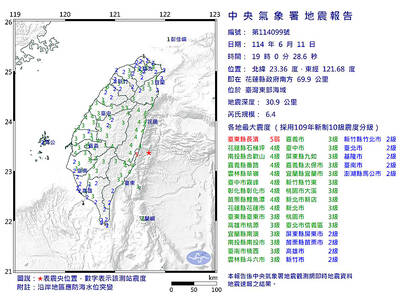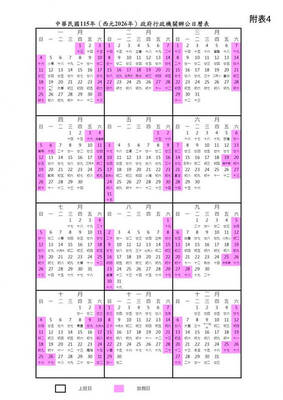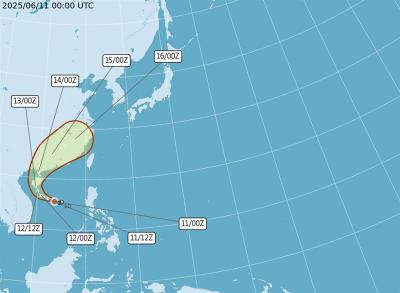The average household size in Taiwan last year was 2.5 people per household, a record low, while single-person households increased to 3,320,380, accounting for 35.9 percent of households, a record high, the Ministry of the Interior’s latest statistics showed.
The “loneliest” county is Penghu County, with single-person households accounting for more than 40 percent of its households, while Taipei is the “loneliest” among the six special municipalities, with more than 410,000 single-person households, accounting for about 39.2 percent of the city’s households.
The total number of households nationwide has increased year by year, from about 8.28 million in 2013 to about 9.24 million last year, an increase of about 1 million households in a decade.

Photo: Wu Chun-feng, Taipei Times
In the same period, with the aging population and low birthrate, increasingly more people are living alone, with single-person households increasing from 2,530,995 to 3,323,808, an increase from 30.5 percent to 35.9 percent of households.
Moreover, the number of households with “three generations under one roof” (multigenerational) is rapidly decreasing.
By the end of last year, there were more than 5.28 million single-person or two-people households, accounting for 57.1 percent of all households, but the number of multigenerational households with five members or more have dropped to about 1.036 million, which is about 255,000 households fewer than the 1.291 million 10 years ago.
New Taipei City has the most single-person households, reaching more than 634,000, but Penghu County has the highest percentage at 41.9 percent, followed by Keelung at 39.9 percent and Taipei at 39.2 percent.
The least “lonely” county is Changhua County, with single-person households accounting for about 27.9 percent of its households, and it is the only city or county with a rate lower than 30 percent. The county pays the lowest average monthly contribution to labor pensions while having the highest crude birthrate in the nation.
A ministry official, who spoke on condition of anonymity, on Friday said Taiwan is becoming a “lonely society” like Japan, with the number of multigenerational households decreasing and the number of “standard families” — a married couple with two children — also decreasing.
The reasons are that the number of unmarried people is increasing, that increasingly more elderly people are not living with their children for various reasons, and that those who are single or do not have children will eventually become old, so there would be more elderly people living alone, the official said.
When “families” are gradually becoming smaller, the impact to the society is difficult to estimate, the official said, adding that the most obvious impact is that more elderly people are expected to no longer live in a familiar environment, and hospitals and nursing homes might be overwhelmed with demand.
Meanwhile, only 48.47 percent of women were married last year, a record low, according to the ministry’s latest population statistics.
Among women in the “ideal marriage age” range as recommended by the Health Promotion Administration — 25 to 35 years old — only 17.72 percent of women aged 25 to 29 were married last year, which was previously 23.76 percent, and 41.41 percent of women aged 30 to 34 were married, which was previously 52.63 percent. The average and median of first marriage age of women were above 30, the ministry’s statistics showed.
The average first marriage age was delayed year by year, with men being 30.19 years old and women being 30.1 years old in 2022, and the median of first marriage age was 32.6 in men and 30.7 in women last year — both the average and median age marked a record high.
Aside from getting married late, more people choose not to be married. The marriage rate among women dropped to 48.37 percent last year from 50.64 in 10 years.

A magnitude 6.4 earthquake struck off the coast of Hualien County in eastern Taiwan at 7pm yesterday, the Central Weather Administration (CWA) said. The epicenter of the temblor was at sea, about 69.9km south of Hualien County Hall, at a depth of 30.9km, it said. There were no immediate reports of damage resulting from the quake. The earthquake’s intensity, which gauges the actual effect of a temblor, was highest in Taitung County’s Changbin Township (長濱), where it measured 5 on Taiwan’s seven-tier intensity scale. The quake also measured an intensity of 4 in Hualien, Nantou, Chiayi, Yunlin, Changhua and Miaoli counties, as well as

Taiwan is to have nine extended holidays next year, led by a nine-day Lunar New Year break, the Cabinet announced yesterday. The nine-day Lunar New Year holiday next year matches the length of this year’s holiday, which featured six extended holidays. The increase in extended holidays is due to the Act on the Implementation of Commemorative and Festival Holidays (紀念日及節日實施條例), which was passed early last month with support from the opposition Chinese Nationalist Party (KMT) and Taiwan People’s Party. Under the new act, the day before Lunar New Year’s Eve is also a national holiday, and Labor Day would no longer be limited

COMMITMENTS: The company had a relatively low renewable ratio at 56 percent and did not have any goal to achieve 100 percent renewable energy, the report said Pegatron Corp ranked the lowest among five major final assembly suppliers in progressing toward Apple Inc’s commitment to be 100 percent carbon neutral by 2030, a Greenpeace East Asia report said yesterday. While Apple has set the goal of using 100 percent renewable energy across its entire business, supply chain and product lifecycle by 2030, carbon emissions from electronics manufacturing are rising globally due to increased energy consumption, it said. Given that carbon emissions from its supply chain accounted for more than half of its total emissions last year, Greenpeace East Asia evaluated the green transition performance of Apple’s five largest final

The first tropical storm of the year in the western North Pacific, Wutip (蝴蝶), has formed over the South China Sea and is expected to move toward Hainan Island off southern China, the Central Weather Administration (CWA) said today. The agency said a tropical depression over waters near the Paracel and Zhongsha islands strengthened into a tropical storm this morning. The storm had maximum sustained winds near its center of 64.8kph, with peak gusts reaching 90kph, it said. Winds at Beaufort scale level 7 — ranging from 50kph to 61.5kph — extended up to 80km from the center, it added. Forecaster Kuan Hsin-ping